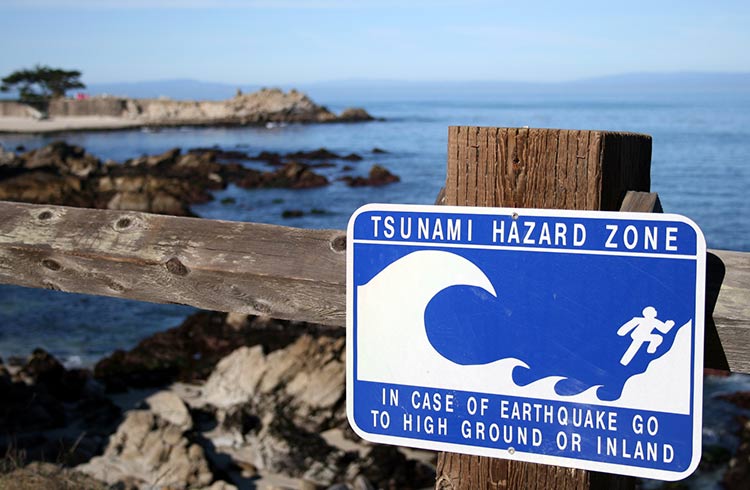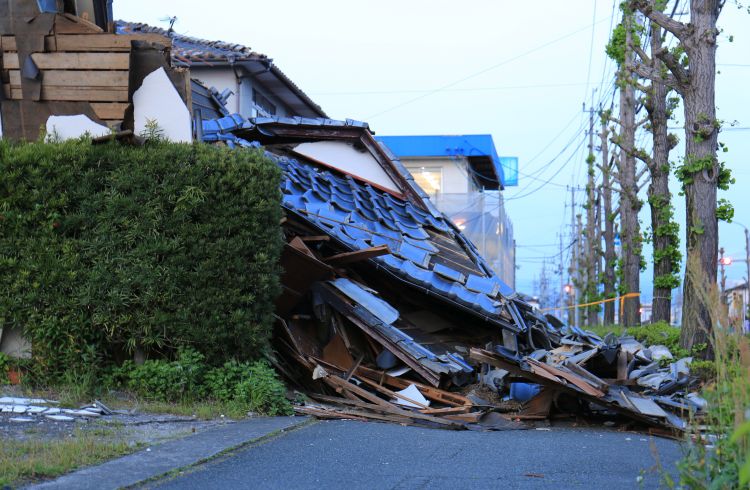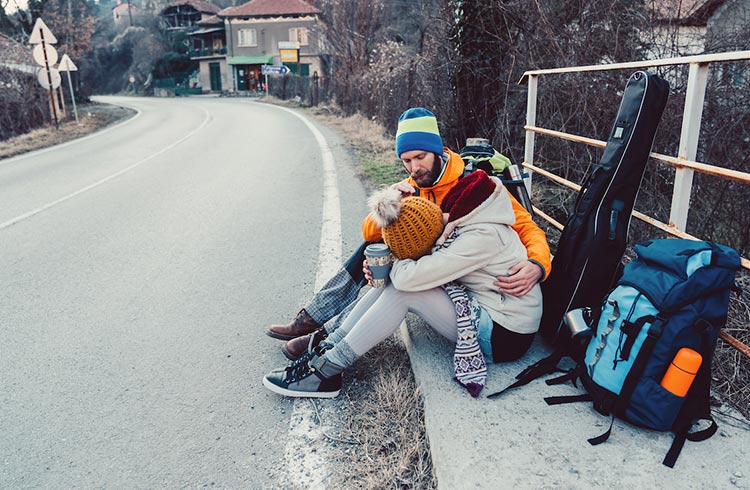How to Survive a Tsunami: Essential Tips for Travelers
When a tsunami warning is issued, what do you do? Find out about the warning signs, how to prepare and stay safe.
 Photo © iStock/akiyo
Photo © iStock/akiyo
Tsunamis are rare, but they can strike suddenly and transform a relaxing beach vacation or island adventure into a life-threatening situation. If you’re traveling in coastal regions or popular island destinations, knowing how to spot tsunami warning signs and respond quickly can be a lifesaver.
We asked Kirk Willcox from Surf Aid International, a non-profit organization and partner in the World Nomads Footprints Program, for his top tips to stay safe during a tsunami.
By preparing ahead, understanding evacuation routes, and staying alert to both natural cues and official alerts, you can increase your chances of staying safe during a tsunami.
What Is a Tsunami?
A tsunami is a series of powerful ocean waves caused by significant underwater disturbances, such as:
- Earthquakes beneath the sea
- Volcanic eruptions
- Underwater landslides
Tsunami waves can travel at speeds up to 500 mph in deep water, slowing down as they approach the shore but growing dramatically in height and destructive potential. Understanding what a tsunami is can help you react faster if one occurs.
How to Recognize Tsunami Warning Signs
Being able to identify both natural warning signs and official alerts is key to survival:
--Natural Indicators
- Strong or prolonged earthquake shaking – Feeling the ground shake while near the coast may be your first warning.
- Unusual sea recession – A sudden drop in sea level exposing the ocean floor.
- Loud ocean roar – A sound similar to a jet engine coming from the water.
--Official Alerts
- Warnings issued by local authorities or international tsunami monitoring agencies.
- Activation of sirens, text alerts, or app notifications. However, treat the ‘all clear’ signal with caution.
It has been reported that the high death toll for the 2004 Sumatra tsunami was in part caused by a defective tsunami warning system – people simply weren't prepared. In recent years, developing nations plagued by tsunamis have suffered from the effects of vandals and thieves tampering with and destroying systems put in place to alert authorities about an impending tsunami. Kirk says that in some cases, authorities have delivered radio broadcasts giving an all clear for people to descend from the hill, only to be trumped by a second, third or fourth wave.
Immediate Actions During a Tsunami Threat
If you notice any warning signs or receive an official tsunami alert, follow these steps:
- Move to Higher Ground – Evacuate immediately, even if the water looks calm. If you have a car, use it. If you don’t, catch a ride or start running away from the ocean and up to higher ground.
- Avoid Bridges and Overpasses – They can collapse or become dangerous choke points.
- Do Not Assume One Wave Is the Only Wave – Tsunamis often come in multiple waves; the second or third may be the most destructive. Sometimes these waves can be hours or even days apart.
- Stay Informed – Monitor official updates via radio, apps, or local authorities.
Preparing for Tsunami Risks While Traveling
When visiting coastal or island destinations, preparation is your best defense:
- Research Local Risk Areas – Know the tsunami hazard zones in advance. If you are staying at a beach resort, ask if there is a working tsunami alert system in place.
- Plan Evacuation Routes – Identify nearby high ground or inland escape routes.
- Pack an Emergency Kit – Include water, non-perishable food, flashlight, whistle, first-aid supplies, and any essential medications.
- Subscribe to Alerts – Enable local emergency notifications on your phone or travel apps.
Post-Tsunami Safety Measures
After a tsunami, your safety is not guaranteed—take these precautions:
- Avoid Contaminated Water – Floodwaters may carry debris and sewage.
- Stay Away from Damaged Buildings – Structures may be unstable or prone to collapse.
- Follow Official Instructions – Local authorities will guide when it is safe to return.
- Beware of Debris and Secondary Hazards – Falling trees, slick roads, and unstable ground are common post-tsunami.
While tsunamis are rare, the consequences can be severe. By staying alert, preparing in advance, and knowing what to do when danger strikes, you can protect yourself and others. Remember, even if you are just visiting coastal areas for vacation, understanding tsunami safety is a crucial part of responsible travel.
Related articles
Simple and flexible travel insurance
You can buy at home or while traveling, and claim online from anywhere in the world. With 150+ adventure activities covered and 24/7 emergency assistance.
Get a quote

5 Comments
I am a survivor of a locally generated tsunami in Halape, Hawaii on November 29, 1975. Two earthquakes, 5.5 then 7.7 early in the morning generated a wave that killed people in the pitch black of night. I have a story to share long before people heard the word "tsunami" when the terrible hit Thailand. Although it's been nearly 40 years now, the events of that night are as vivid as if it was last night.
Who can I share my life experience with this heavily documented event by the USGS?
Bradley Jones
415.716.3848
I would love to hear more about this event and details as to what you think a person could do to increase their chances of surviving. What type of equipment should one have ready? How much time would one have? Etc
The whole " authorities have delivered radio broadcasts giving an all clear for people to descend from the hill, only to be trumped by a second, third or fourth wave.
" actually happened here in Chile in 2010. Lots of people died because of it and we as citizens had a huge trial against authorities. So the advice is very important
I think the best way to survive a tsunami is to get to high ground...
But how do you survive a comet? hm?